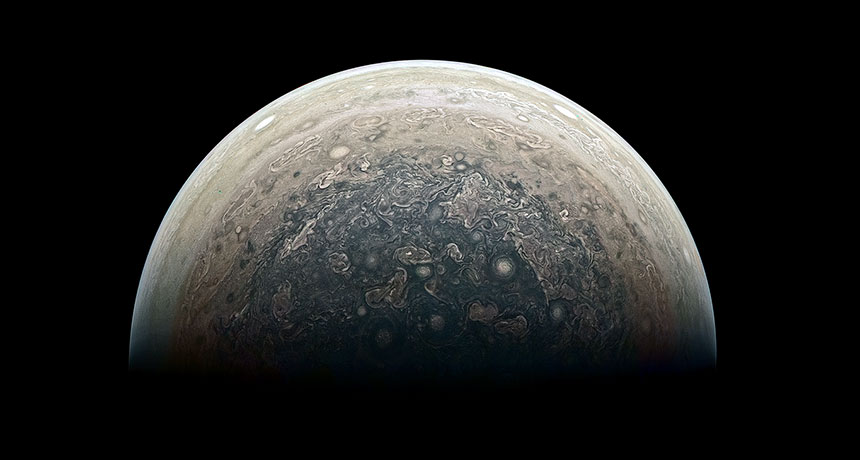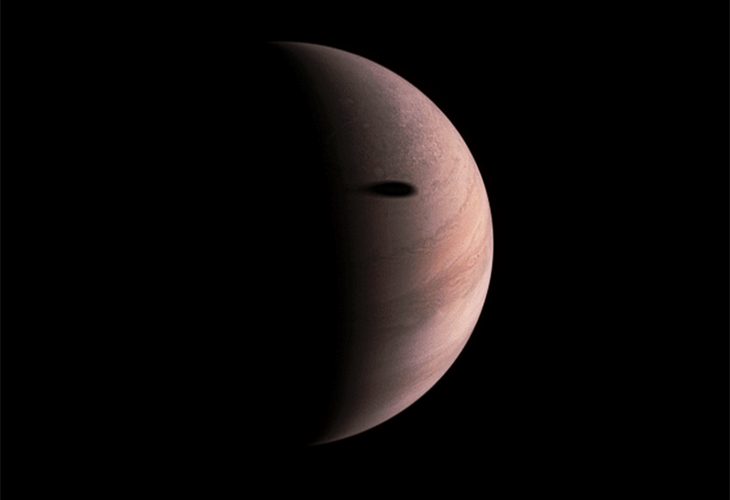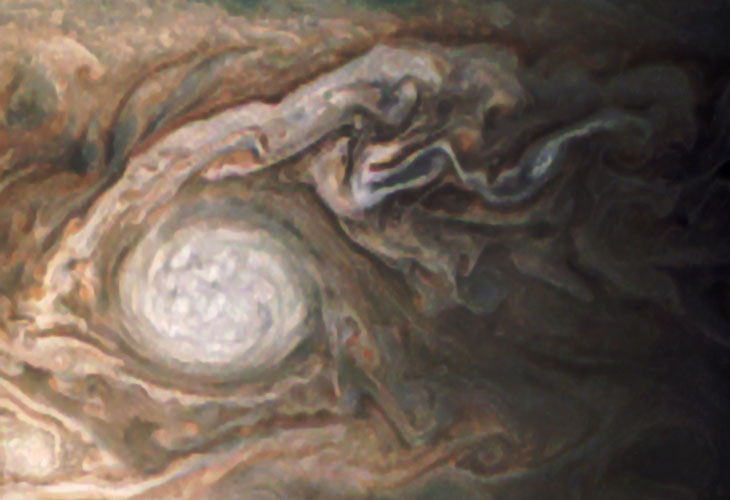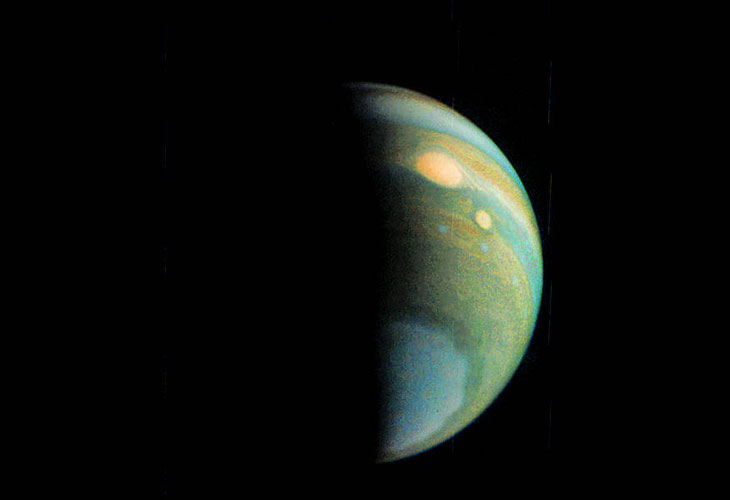Citizen scientists are providing stunning new views of Jupiter
JunoCam lets public point camera, process images, feel like space explorers

WAY DOWN UNDER A rare look at Jupiter’s south pole reveals storms and cyclones, seen in this enhanced-color image edited by citizen scientist Roman Tkachenko using data from NASA’s JunoCam. The raw image was taken February 2, 2017, when Juno swooped to about 102,100 kilometers above the planet’s clouds during a fourth flyby.
Roman Tkachenko, MSSS, SwRI, JPL-Caltech/NASA
- More than 2 years ago
Stormy, with a good chance of cyclones. That’s the forecast for Jupiter’s south pole — a region never seen before but quickly coming into focus with the help of citizen scientists.
Music producer Roman Tkachenko’s edited image of Jupiter’s nether regions (featured above) is a perfect example. His enhancements make the swirling cyclones and white oval storms really pop compared with the raw image, highlighting features at the pole that we otherwise may have missed.
“Jupiter’s poles don’t look anything like what the team thought they would,” says Southwest Research Institute planetary scientist Scott Bolton. He heads the Juno mission, which is probing the mysteries of Jupiter with a spacecraft that is swooping around the planet for 20 months. No one, he says, was expecting so many cyclones and storms.
Such unprecedented views come thanks to JunoCam, a camera on the Juno spacecraft that is not necessarily essential to meet the science goals of the mission. Bolton’s team added it to provide a rare glimpse of Jupiter’s poles and close-ups of everything in between, and give space enthusiasts an opportunity to play a part in exploring the gaseous planet.
And they are.
Citizen scientists join discussions about which Jovian features the camera will snap pics of, and vote on their favorite targets — those with most votes are photographed. These individuals download raw images and then upload edited versions. “We want the public to jump right in and be our partners in this mission,” Bolton says. “We want everyone to experience what it is like to discover something no one else has seen before.”

Pretty much all of what we are learning about the structures and dynamics of Jupiter’s clouds is coming from public-edited images, says planetary scientist and JunoCam wrangler Candice Hansen. The team is processing a few images itself but with no image processing staff, the researchers are relying on the work of citizen scientists.
Thanks to them, raw data is being turned into beautiful and scientifically important images and movies, ones that track how storms move and provide a fresh perspective of Jupiter.
Sometimes, science and art intersect.
“When I process the images, I try to get better detail than we have in raw imagery and try to show all the features, even if it looks unnatural,” Tkachenko, who lives in Russia, writes in an e-mail. “Sometimes I choose the way of artistic processing and try to make an image more exciting and expressive.”
His enhanced view of Jupiter’s south pole captured NASA’s attention: The space agency featured it on nasa.gov. That’s “the best gift for every amateur image processor who works with space images,” Tkachenko says.
Jason Major, a freelance graphic designer and space blogger living in Rhode Island, takes a slightly different approach. “I attempt to bring out some of the fine details of Jupiter’s dynamic atmosphere while at the same time making the final image appear something like what our eyes might be able to see, [as if] we were riding along with Juno in orbit and watching Jupiter’s cloud bands pass by,” he writes in an e-mail.

Some people who started editing raw images as a hobby have gone on to work for NASA. Others have identified features that warranted further scientific study. “In providing ‘out of the camera’ images for the public to play with — as well as giving the opportunity to vote on imaging targets — NASA is not only encouraging public buy-in but also getting some nice results back,” Major says.
Bolton agrees. “Jupiter is surprising us in every way,” from the interior structure to the auroras. He wouldn’t divulge any additional details on soon-to-be-published scientific papers related to Juno but says what’s to come will completely change how we think about giant planets, here in our own solar system and those far, far away.

If it were up to Tkachenko and Major, Jupiter’s Great Red Spot should win. The iconic storm has raged on the planet for more than 300 years, and over the decades that we have observed it, it has grown and shrunk and morphed from tan to brown to rusty red. “But it’s always there, churning away,” Major says. “It’s our best look deep into the atmosphere of this gas giant. The more Juno can tell us about it, the more we’ll know about what powers the storms on Jupiter and other planets like it.”







